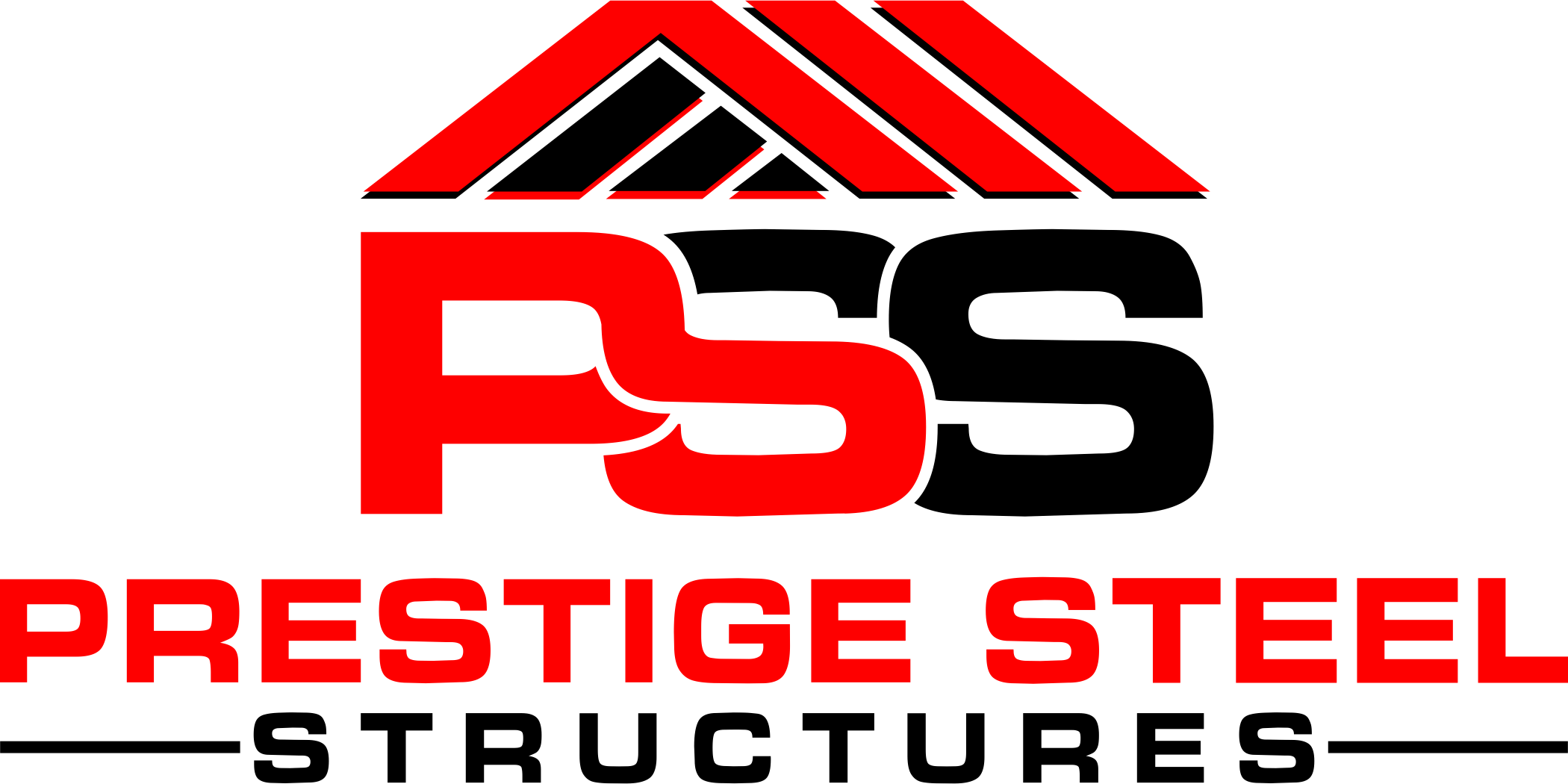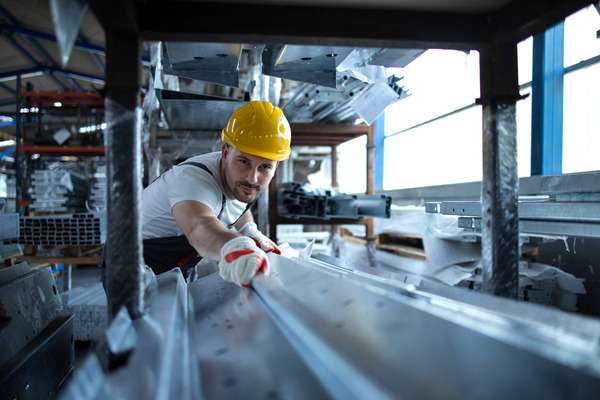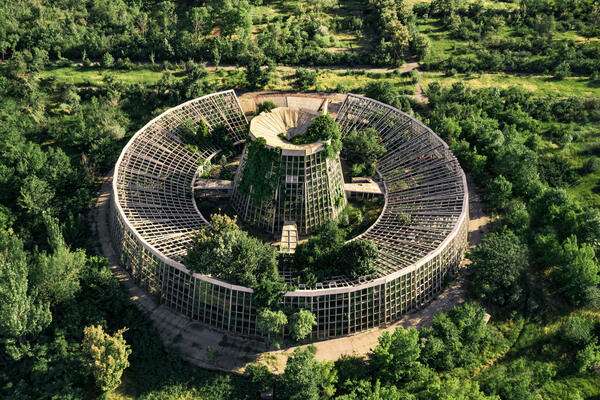Superman isn’t called the Man of Steel for nothing. Pound for pound, steel stands as the strongest construction material. It’s not just strong—it’s also incredibly durable. Take the Winterton House in London as an example. Decades after its initial construction, this 25-story building required an upgrade. When crews stripped it down, they discovered its steel frame remained in excellent condition. With only minor reinforcements, they reconstructed the residential units at a fraction of the original cost, proving steel’s long-term value.
Blast-resistant buildings must endure explosions, safeguard occupants, and remain structurally sound after extreme events. That’s why tensile strength matters. Choosing steel as your primary construction material ensures your building—and, more importantly, your team—stays protected.
Why Steel Offers Superior Strength
Steel stands out for its impressive tensile strength, meaning it can withstand significant force before breaking or rupturing. Before reaching its ultimate tensile strength, steel undergoes elastic deformation, allowing it to stretch and return to its original shape. In contrast, reinforced concrete blast-resistant buildings lack tensile strength. Why does this matter?
During a blast test, the shock wave moves outward from the explosion’s point of origin. Without tensile strength, a structure would shatter under the force. However, steel absorbs the impact by dispersing compression pressure on the exterior and tensile stress on the interior. This ability allows steel to shield occupants and assets, much like a lightning suit, ensuring safety while the forces of physics unfold outside.
Why Steel’s Flexibility is Essential for Tall Buildings
Steel reinforcement plays a crucial role in tall buildings due to its flexibility, also known as ductility—the ability to bend without breaking.
Skyscrapers face strong winds at high altitudes, making rigidity a risk rather than an advantage. Steel’s flexibility allows these structures to sway slightly, preventing structural damage and enhancing durability.
This adaptability also helps buildings withstand extreme weather conditions. In blast-resistant structures, steel’s elasticity enables it to expand and contract without cracking under pressure. Unlike concrete, which lacks this property, steel provides an added layer of resilience against external forces, ensuring long-term stability and safety.
Steel’s Lightweight Advantage in Blast-Resistant Buildings
Steel’s lightweight nature significantly reduces construction costs for blast-resistant buildings compared to reinforced concrete structures. Since steel components are prefabricated and assembled off-site, transportation and installation become seamless. The lighter weight allows for easy handling, enabling quick assembly on-site with minimal disruption. A small unit can be completed in just a few weeks, making steel an efficient choice for fast-track construction.
Additionally, steel’s malleability simplifies the integration of fixtures and fittings. Unlike concrete, there’s no need to drill through walls or make structural modifications for wiring and plumbing. The building’s design already accommodates these elements, streamlining the installation process and ensuring efficiency.
Prioritize Workplace Safety for Your Team
Your employees are your most valuable asset—not just your machines or materials. Whether the risk comes from accidental hazards or malicious threats, protecting your team is your responsibility. Many states enforce workplace safety laws, ensuring businesses provide a secure environment for their employees.
Steel structures offer superior safety, especially in the event of an explosion. Their durability and resilience make them a trusted choice among insurance companies, often leading to lower premiums. Businesses looking for a cost-effective and long-lasting commercial solution benefit from steel’s higher return on investment compared to concrete blast buildings. Its strength and flexibility ensure long-term structural integrity, making it the ideal choice for both safety and financial efficiency.
Sustainability and Environmental Benefits of Steel Construction
Steel is one of the most sustainable building materials available today. Unlike concrete, which requires extensive raw material extraction and contributes significantly to CO₂ emissions during production, steel is highly recyclable. In fact, over 90% of structural steel comes from recycled materials, reducing the demand for virgin resources.
Additionally, steel buildings are more energy-efficient. Their design allows for better insulation, reducing heating and cooling costs over time. Prefabricated steel components also minimize on-site waste, making construction more eco-friendly. Because steel can be reused and repurposed without losing its structural integrity, it contributes to a circular economy, lowering the overall environmental impact of construction projects.
Cost-Effectiveness: Long-Term Savings with Steel Structures
While the initial cost of steel structures may be higher than concrete, their long-term financial benefits outweigh the upfront investment. Steel’s durability means fewer repairs and lower maintenance costs over time. Unlike concrete, which is prone to cracking and deterioration, steel buildings require minimal upkeep, ensuring cost savings in the long run.
Additionally, steel structures offer flexibility in design, allowing for easy modifications or expansions without major reconstruction expenses. In contrast, altering a concrete structure often involves extensive demolition and rebuilding. Insurance companies also favor steel buildings due to their resilience against fire, explosions, and natural disasters, leading to lower insurance premiums. When considering total lifecycle costs, steel proves to be a more economical choice than concrete.
Fire Resistance and Safety Considerations
While both steel and concrete have fire-resistant properties, steel offers superior performance when combined with fireproof coatings and insulation materials. Unlike concrete, which can crack and weaken under extreme heat, steel maintains its strength when properly treated. Special intumescent coatings expand under heat, forming a protective barrier that insulates the steel and prevents structural failure during a fire.
Additionally, steel’s non-combustible nature makes it ideal for buildings in high-risk industries, such as manufacturing plants, chemical facilities, and military installations. Engineers can design steel structures to meet rigorous fire safety standards, incorporating features such as fire-rated walls, heat-resistant steel framing, and automatic fire suppression systems. In hazardous environments, these fireproofing measures ensure maximum protection for both occupants and assets.
Speed and Efficiency of Steel Construction
One of the biggest advantages of steel construction is the speed at which buildings can be erected. Unlike concrete, which requires extensive curing time, steel components are prefabricated off-site and arrive ready for assembly. This streamlined process significantly reduces construction timelines, allowing projects to be completed in weeks rather than months.
Additionally, steel’s lightweight properties simplify transportation and installation, reducing labor costs and on-site disruptions. In industries where downtime directly impacts revenue—such as manufacturing plants, military facilities, and commercial buildings—steel construction offers a rapid, efficient solution without compromising durability or safety. This speed advantage also proves critical in emergency rebuilding efforts, where quick deployment of structures is necessary after disasters.
Conclusion
When choosing between steel and concrete for construction, steel stands out as the superior option. Its unmatched tensile strength, flexibility, and lightweight nature make it the ideal material for blast-resistant buildings, skyscrapers, garages, and high-risk industrial structures. Additionally, steel offers long-term cost savings, sustainability benefits, and enhanced fire resistance when properly treated. Unlike concrete, which deteriorates over time, steel structures remain durable and adaptable, ensuring a longer lifespan with minimal maintenance. Insurance companies also favor steel buildings due to their resilience in extreme conditions, leading to lower premiums. By prioritizing steel in construction, businesses and developers can build safer, stronger, and more cost-effective structures while reducing their environmental impact and ensuring workplace safety.
FAQ’s
Which material is stronger, steel or concrete?
Steel offers superior tensile strength, resisting stretching, bending, and impact. Concrete excels in compressive strength, making it ideal for load-bearing walls and foundations. When reinforced with steel, concrete becomes stronger, but steel alone provides greater durability and flexibility.
Is steel or concrete more cost-effective?
Steel requires a higher initial investment, but its durability and minimal maintenance lead to long-term savings. It also speeds up construction, reducing labor costs. Concrete costs less upfront but needs frequent repairs and modifications, which increase expenses over time.
Which material performs better in earthquake and blast-resistant buildings?
Steel withstands earthquakes and explosions better because of its flexibility (ductility), allowing it to absorb and disperse energy without breaking. Concrete, in contrast, is more brittle and cracks under extreme stress.
Is steel or concrete more environmentally friendly?
Steel remains the more sustainable choice since manufacturers recycle it at a high rate, reducing waste. Concrete production generates more CO₂, making it less eco-friendly. However, advancements in green concrete technology continue to improve its sustainability.
Which material works best for skyscrapers and tall buildings?
Steel dominates skyscraper construction because of its lightweight, high strength, and flexibility, allowing buildings to sway safely in high winds and earthquakes. Concrete, being heavier and more rigid, limits a building’s height and adaptability.
Users Also Say:
What do others think about building with steel vs. concrete?
Gio92*****
Steel isn’t just stronger—it’s also easier to cast, enabling the creation of highly optimized structural elements.
These optimized steel components weigh significantly less than their concrete counterparts. In addition to being lighter, steel structures offer greater flexibility, while concrete remains more rigid and less adaptable to external forces.
A finished steel structure is considerably lighter and more flexible than an identical concrete structure. This reduced weight and enhanced flexibility make steel a superior choice for construction, improving both efficiency and resilience.




